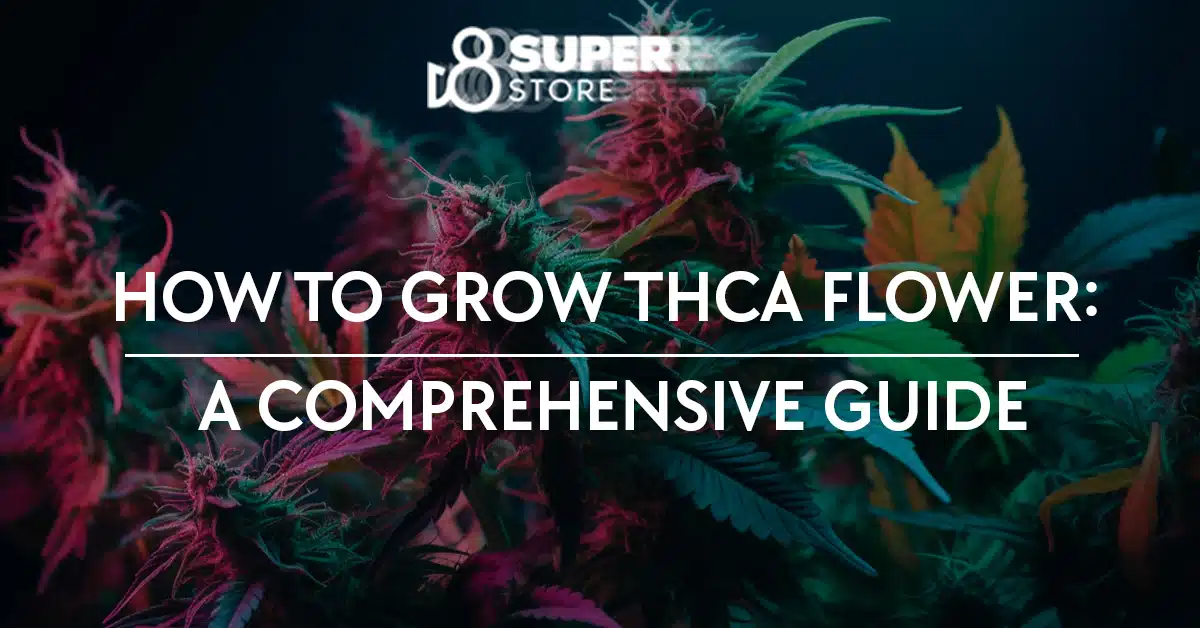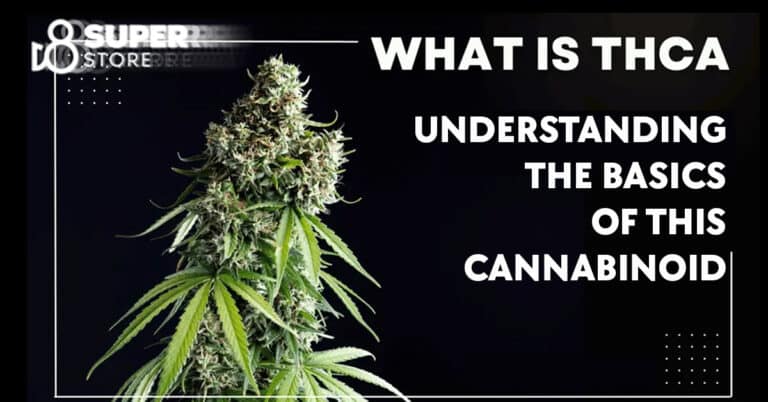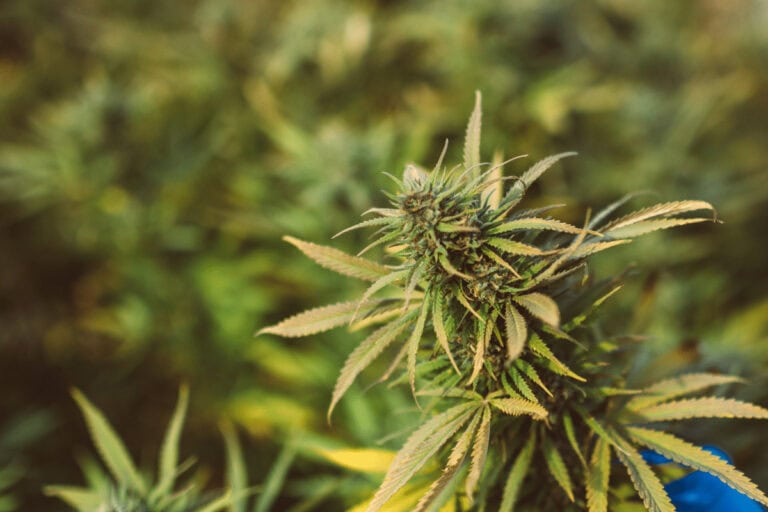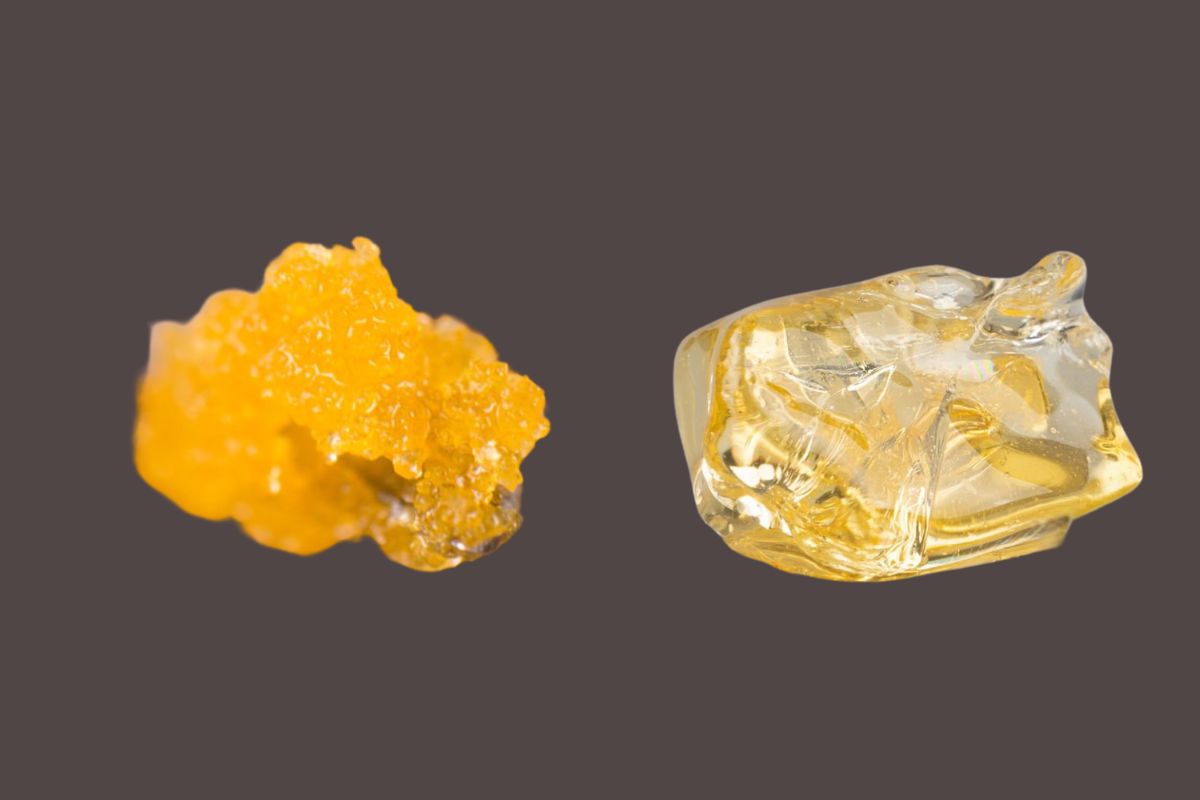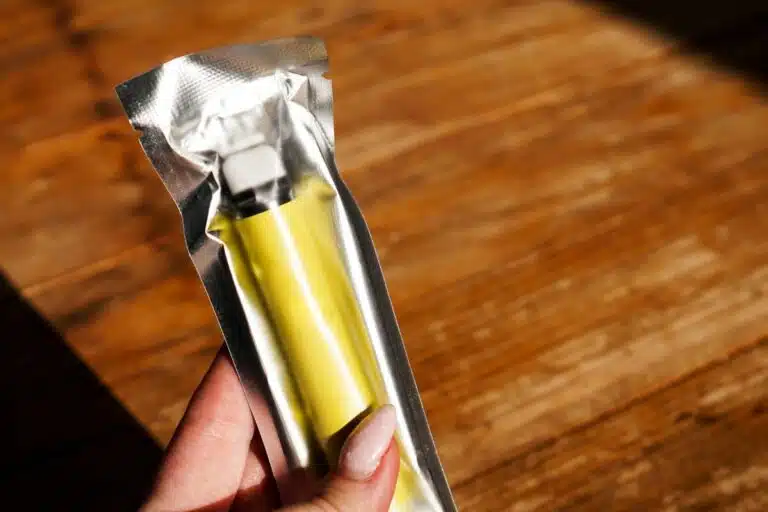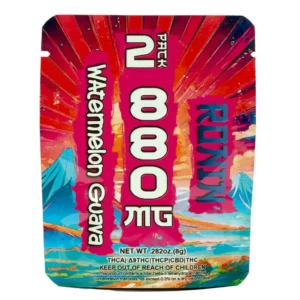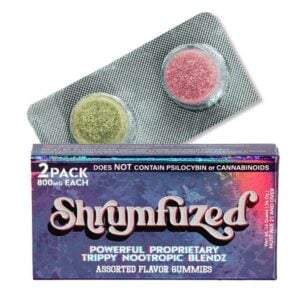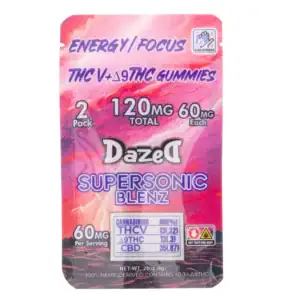How to Grow THCa Flower: Expert Tips for Optimal Cultivation
THCa is like a quiet giant chilling in the untouched wilds of fresh cannabis, never getting you buzzed. Imagine it as the peace before a storm, ready to change into THC, which turns any party up a notch, all it takes is a little heat. Wanna see your cannabis sparkle with sky-high THCa levels? Then, cracking the code of how it grows and what makes it happy is your mission. Jump on in, and you’re on your way to being a plant-growing magician, turning green dreams into potent realities. Why stick around? Because flipping THCa to THC should feel like an awesome adventure you’re totally nailing, not some head-scratcher.
- Understanding THCa Flower
- Genetics and Strain Selection
- Starting Your Cultivation Journey
- Creating the Optimal Growing Environment
- Advanced Cultivation Techniques
- The Flowering Stage
- Harvesting and Curing Process
- Legal Considerations and Compliance
- Using THCa Flower
- End of Growth
- Exploring Market and Industry Trends
- Frequently Asked Questions
- What are the best practices for cultivating high-THCa flowers from seeds?
- Can you provide tips for growing high-THCa flowers indoors?
- What are the legal considerations for cultivating THCa flowers?
- How can you ensure the safety and quality of home-grown THCa flowers?
- What are the differences between Indica and Sativa strains in the context of THCa potency?
- Does consumption of THCa flowers lead to psychoactive effects?
Growing THCa-rich flowers begins with selecting the right cannabis strain, as not all strains produce high levels of THCa. Once you’ve chosen an appropriate strain, you must offer the plants an environment conducive to their development. This includes controlling factors like temperature, lighting, and humidity. During the flowering period, the cannabinoid production is at its peak, and particular attention to the plants’ care can influence the THCa levels in the buds.
To cultivate hemp for THCa production, you need to be mindful of the legal limitations and agricultural best practices. Recent studies demonstrate developmental patterns of cannabinoids like THCa and CBDa throughout the flowering period. This phase is critical to your hemp’s chemical composition, making it imperative to monitor and adjust your cultivation techniques carefully. With proper care and attention to detail, you can maximize the potential for THCa in your cannabis flowers.
Understanding THCa Flower
When cultivating THCa flower, it’s essential to grasp its unique cannabinoid profile and the decarboxylation process which affects its psychoactive effects.
Cannabinoid Profile: THC vs. THCa
Tetrahydrocannabinolic acid (THCa) is the non-psychoactive precursor to delta-9 THC, the primary psychoactive component in cannabis. In the raw form of THCa flower, THCa is abundant, and THC levels are typically minimal. As the flower matures, THCa synthesizes and accumulates within the trichomes of the plant.
- THCa: Non-psychoactive, found in raw cannabis flowers
- THC: Psychoactive, produced through decarboxylation of THCa
Understanding the distinction between these two cannabinoids is crucial for your grow process, as it influences the ways you might handle the plant post-harvest.
Psychoactive Effects and Decarboxylation
Decarboxylation is a chemical process that removes a carboxyl group from THCa, converting it into psychoactive delta-9 THC. Heat is the primary catalyst for this transformation, which can occur during:
- Smoking or vaping: Immediate decarboxylation and release of THC
- Curing and drying: Gradual decrease in THCa, increase in THC
- Cooking: Decarboxylation occurs when cannabis is heated to make edibles
Your aim in growing THCa flower may dictate how you approach decarboxylation. If you seek non-psychoactive properties, minimizing heat exposure preserves THCa. If psychoactive effects are desired, you’ll ensure proper decarboxylation post-harvest.
Genetics and Strain Selection
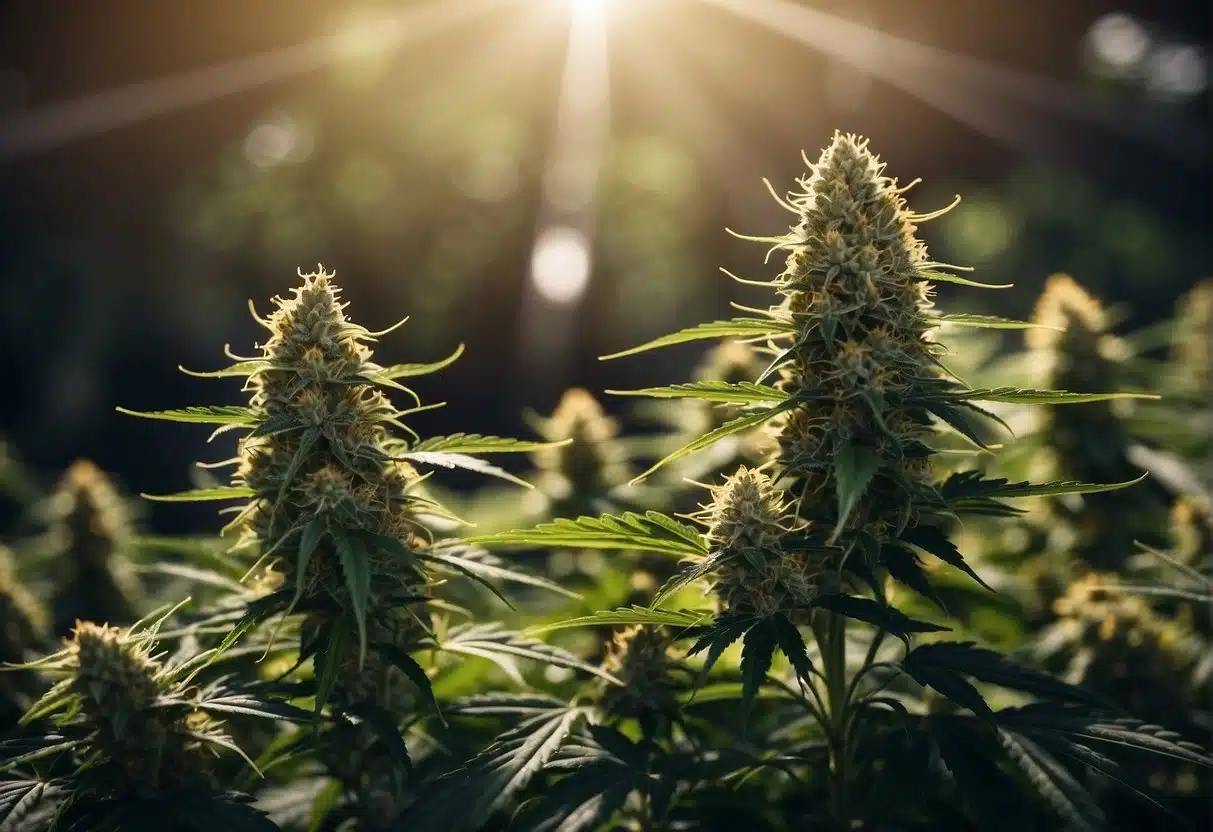
When growing THCa-dominant cannabis, understanding and leveraging the right genetics is crucial. The success of your cultivation largely depends on starting with a strain that is genetically predisposed to produce high levels of THCa.
Selecting the Right Strain
Your journey begins with selecting the right strain. Not all cannabis strains are created equal, and the genetic makeup is the determining factor for a plant’s potential to produce THCa. Breeders have worked extensively to develop strains that meet specific cannabinoid profiles. Consider strains that have been genetically selected for THCa production, focusing on those with a history of laboratory-tested results. Companies and breeders will often provide chemotypes of strains, which are the chemical phenotype expressions, such as THCa content.
Characteristics of High-THCa Strains
When evaluating strains for high-THCa production, pay particular attention to the growth characteristics and flower morphology. High-THCa strains often have distinct growth patterns, flowering times, and physical traits that set them apart:
- Flowering Time: Some high-THCa strains may have longer flowering cycles. Knowing this can help you plan your grow and harvest accordingly.
- Yield: High-THCa strains could potentially produce less overall yield in comparison to strains bred for quantity. Your focus with these strains is on quality and cannabinoid content rather than sheer volume.
- Resin Production: Look for strains that exhibit abundant trichome production. A frosty appearance often indicates high cannabinoid concentrations, including THCa.
Select strains from reputable sources where careful breeding has emphasized these characteristics. The genetics shaped by such precision will position your grow for optimal THCa production. For more information on the genetic factors of selecting the right strain, consider insights from expert research, like the findings in Frontiers in Plant Science on the genetic control of cannabis traits.
Starting Your Cultivation Journey
Embarking on your cultivation journey to grow high-THCa cannabis flowers begins with understanding the critical early stages of plant development. Successful germination sets the cornerstone for robust growth, leading to the intricate care required during the vegetative stage.
Germination Techniques
Seed Quality: Ensure you’re starting with high-quality seeds; their genetic makeup is the blueprint of your plant’s potential to produce high levels of THCa.
Methods:
- Soil Method: Plant seeds 1/4 inch deep in moist soil, maintain a temperature of 70-85°F, and watch for sprouts within 5-10 days.
- Rockwool Method: Stabilize cubes at a pH of 5.5-6.5, insert seeds, and keep moist until seeds sprout, ensuring a reliable moisture to air ratio.
- Paper Towel Method: Place seeds between damp paper towels, keep them warm, check daily for moisture, and transplant to soil or rockwool when taproots emerge.
Remember: A consistent, warm, and humid environment is crucial for germination.
Seedling Care and Vegetative Stage
Seedling Stage: Once your seeds have sprouted, provide gentle light, protect from harsh conditions, and monitor soil moisture levels closely. Seedlings are delicate, requiring careful attention to become strong, resilient plants.
Vegetative Stage: Transition your growing plants to a nutrient-rich growing medium. During the vegetative stage, your plants will require:
- Light: 18-24 hours of light per day
- Nutrients: Gradually increase nutrient levels according to plant growth
- Pruning: Trim strategically to promote bushier growth enabling more bud sites
- Training: Employ low-stress training (LST) techniques to optimize light exposure to all parts of the plant
Your role is to provide a stable environment with adequate space, light, and nutrition to facilitate healthy growth.
Creating the Optimal Growing Environment
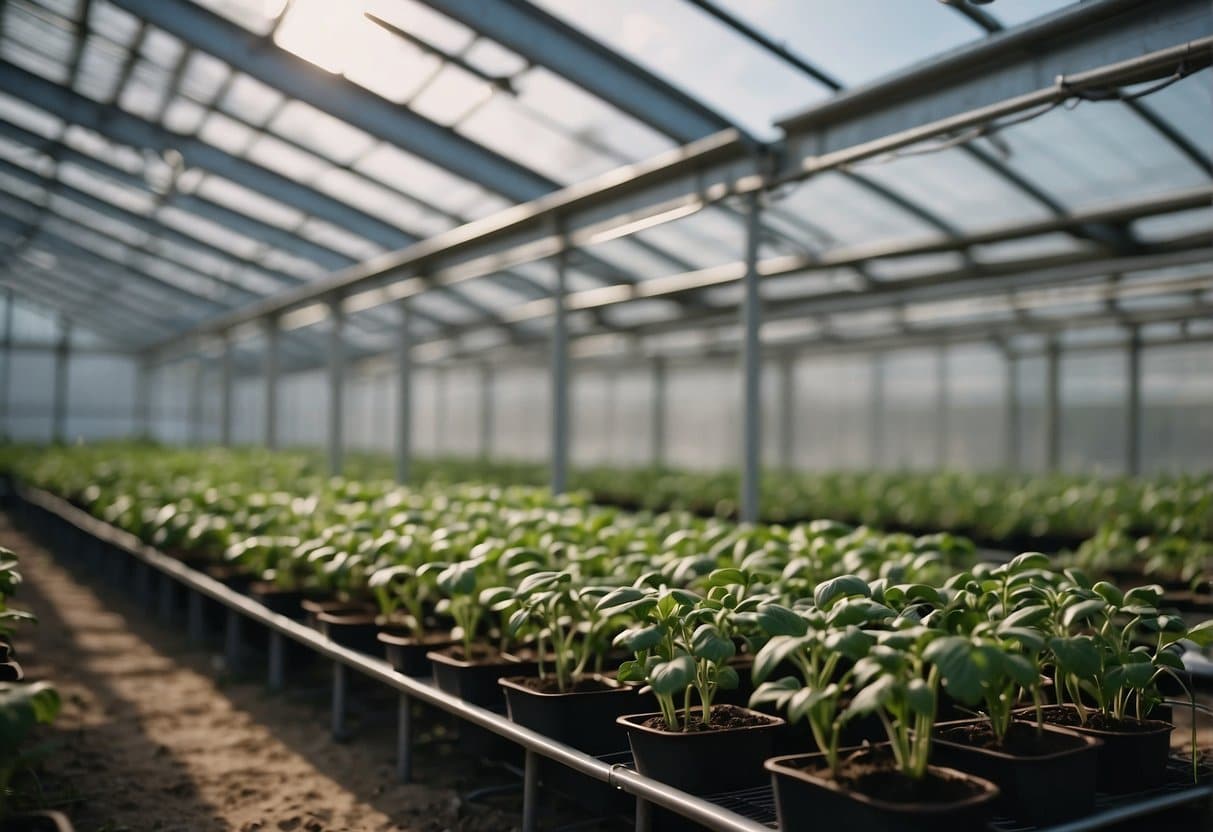
In cultivating THCa-rich cannabis, your success hinges on precise environmental control. Each choice, from soil composition to climate regulation, impacts your plants’ potential to produce the desired cannabinoids.
Soil and Growing Medium Choices
Your choice of growing medium greatly affects the nutrient availability and overall health of your cannabis plants. A coir-based substrate is often recommended due to its excellent drainage and aeration qualities. Ensure that the soil or medium is enriched with essential nutrients; a balanced mix should include nitrogen (N), phosphorus (P), and potassium (K), as well as other micro-nutrients critical for plant development.
Lighting Requirements
Lighting is vital for the growth of cannabis plants, and you’ll need to invest in high-quality systems. LED lights are preferable for their energy efficiency and lower heat output. However, some growers still opt for HID lights, which include both Metal Halide (MH) and High-Pressure Sodium (HPS) lamps. They are potent but produce more heat, requiring additional climate control in your grow room or greenhouse.
Temperature and Humidity Control
Maintaining an ideal temperature between 70-85°F (21-29°C) and humidity levels of 40-60% during the vegetative stage is crucial. During flowering, lower the humidity to 40-50% to discourage mold growth. Use reliable HVAC systems to manage these environmental factors and ensure your grow room or greenhouse remains within these optimal ranges for the best results in THCa production.
Advanced Cultivation Techniques
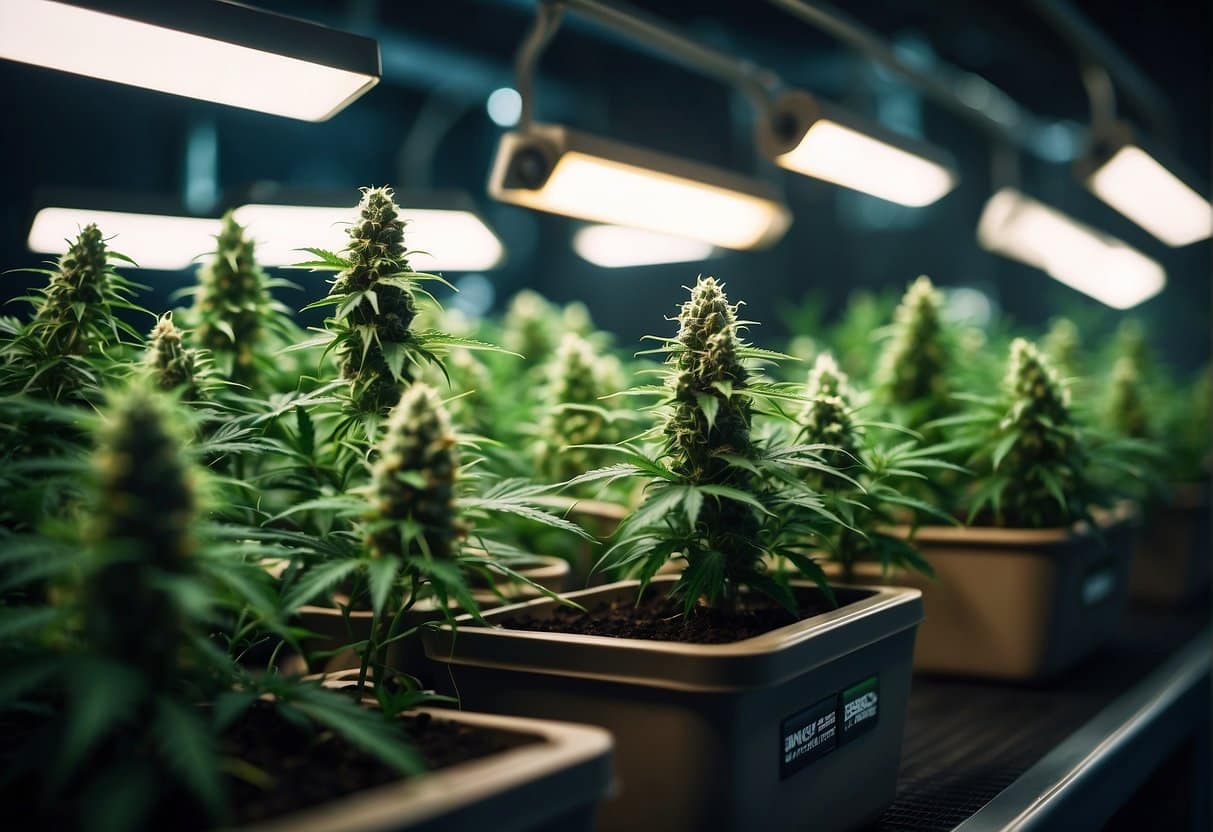
To produce high-quality THCa flowers, your approach must be precise and informed. By managing your plant’s nutrition and hydration needs with scrutiny and adopting proactive measures against pests and diseases, you can ensure the vitality and potency of your cannabis crops.
Nutrient and Water Management
Your THCa plants require a balanced diet of essential nutrients including nitrogen, phosphorus, and potassium, along with a suite of micronutrients. Use a synthetic or natural fertilizer regime tailored to the growth stage of the plant—vegetative or flowering. Supply your plants with water carefully, keeping in mind that overwatering can lead to root issues, while underwatering can stress your plants, detrimentally affecting THCa production.
- Vegetative Stage: Focus on nitrogen-rich fertilizers to promote foliage growth.
- Flowering Stage: Phosphorus and potassium are crucial for bud development.
Monitoring pH levels in your water and soil is critical for nutrient uptake. Aim for a pH of 6.0-7.0 for soil and 5.5-6.5 for hydroponic systems. Consistency is key in water scheduling, as erratic watering can stress plants and impact the quality of your THCa yield.
Pest and Disease Prevention
Implementing a defense against pests and diseases from the outset is far more effective than dealing with an infestation or outbreak. Understand common threats like spider mites and powdery mildew, and recognize that prevention is a continuous process.
- Regular Inspection: Check your plants often for signs of stress or infestation.
- Environment Control: Keep a clean cultivation area with proper humidity and airflow to deter pests and prevent disease.
Employ cultivation techniques aimed at prevention, such as companion planting and the introduction of beneficial insects that naturally control pest populations. Should pests or diseases arise, react promptly with targeted, safe treatments to minimize harm to your plants and the environment.
The Flowering Stage
The flowering stage is a pivotal phase in cultivating THCa-rich cannabis. Here, understanding and manipulation of the light cycle are crucial.
Transition to Flowering
To initiate the flowering stage, you must adjust the light cycle to 12 hours of light and 12 hours of darkness. This simulates the natural approach of autumn, prompting your plants to enter the flowering phase. It’s imperative to maintain this 12/12 light cycle consistently, as variations can stress the plants, leading to hermaphroditism or reduced potency.
Monitoring Plant Development
During the flowering stage, careful observation is vital. You’ll notice white, hair-like pistils forming at the branch junctions, which is a sign that flowering has begun. As your plants develop, monitor the trichomes – the tiny, crystal-like structures on the buds – to determine the optimal harvest time. The trichomes should be clear at the beginning and gradually turn milky white when the level of THCa is highest, before finally becoming amber, indicating a higher level of THC.
Harvesting and Curing Process
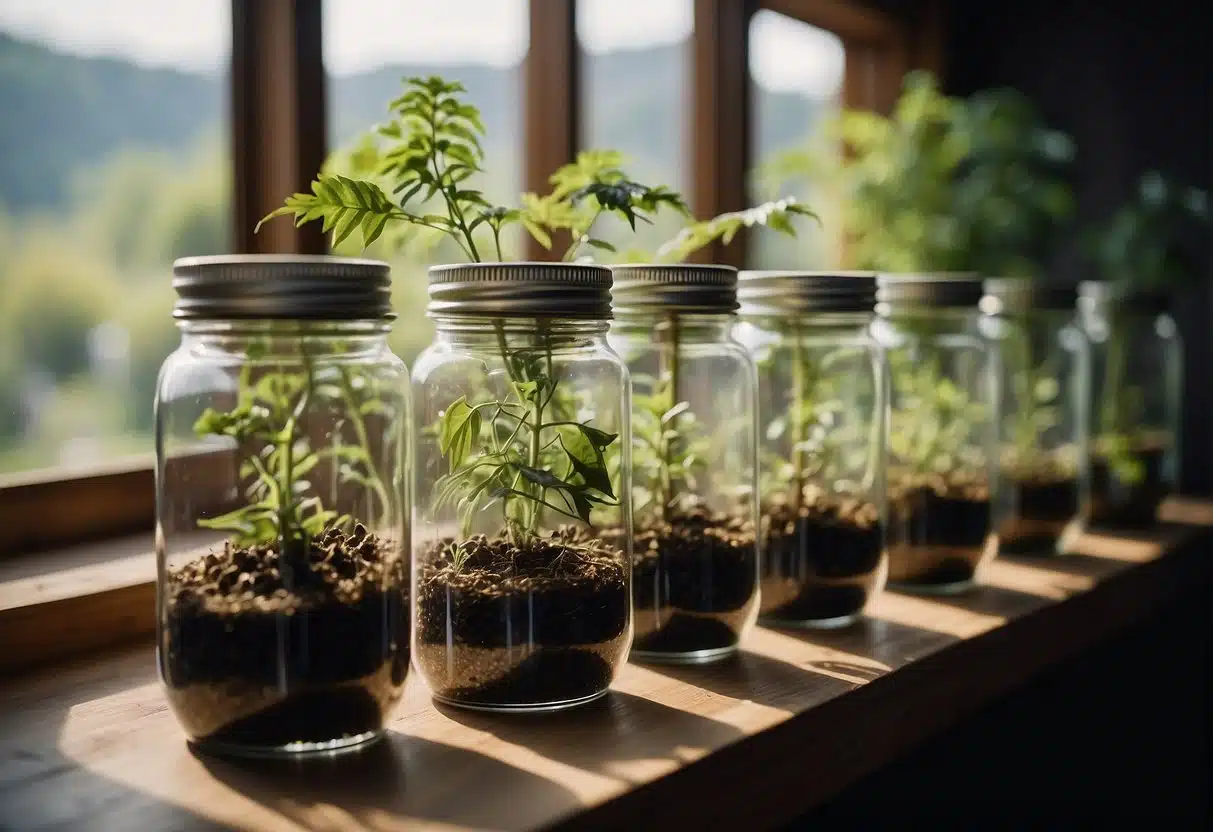
The harvesting and curing process is crucial for ensuring the highest THCa content and potency in your buds. Proper timing, techniques, and conditions during these stages will affect the quality of your final product.
When and How to Harvest
You should begin harvesting when the trichomes of the cannabis plant appear milky white, as this indicates peak THCa levels. Use a magnifying glass to inspect these tiny, crystal-like structures. When at least half of the trichomes have turned from clear to a cloudy color, it’s time to harvest. Use clean, sharp scissors to cut the branches, handling the buds carefully to avoid trichome damage.
Drying and Curing for Potency
Drying:
- Objective: Reduce moisture content while preserving trichomes
- Method: Hang branches upside down in a controlled environment – Humidity: 45-55% – Temperature: 18-22°C
- Duration: 7-14 days, until stems snap but don’t break completely
- Objective: Optimize THCa content and enhance flavor
- Method: Place dried buds in airtight containers – Open the containers to “burp” for 15 minutes twice daily
- Duration: 2-4 weeks for initial cure; extend for further quality
- Tips: – Temperature: Maintain near 21°C – Humidity: Keep at 60-65% to prevent mold
By adhering to these specific harvesting and curing techniques, you ensure maximum potency and quality in your THCa-rich flowers.
Legal Considerations and Compliance
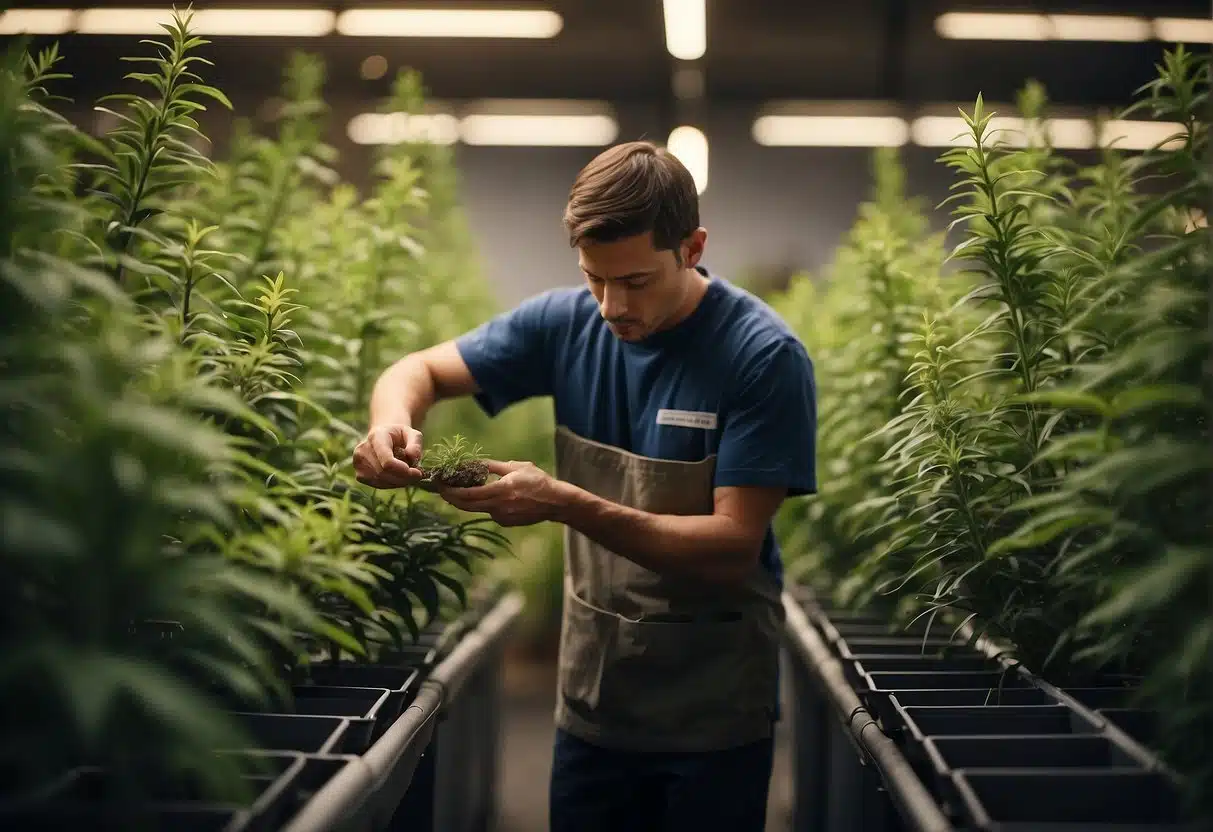
Navigating the complex web of cannabis regulations is critical to legally growing THCa flower. It’s imperative that you understand and adhere to both federal and local laws to ensure your cultivation operations are compliant.
Understanding Cannabis Regulations
Before commencing your cultivation journey, familiarize yourself with the 2018 Farm Bill, a pivotal piece of legislation distinguishing hemp from other cannabis plants. Under this bill, hemp is legally defined as a cannabis plant containing no more than 0.3% delta-9-tetrahydrocannabinol (THC) on a dry weight basis. THCa, while non-psychoactive in its raw form, can potentially convert to THC, so it’s crucial to ensure your plants meet the legal THC threshold to qualify as hemp. Beyond federal guidelines, you must also understand and comply with any state-specific regulations that govern cannabis cultivation and handling in your area.
- Key Statutes:
- 2018 Farm Bill: Legalized hemp at the federal level.
- Controlled Substances Act: Classifies THC as a Schedule I controlled substance.
Federal and Local Laws
At the federal level, the ability to grow cannabis legally is limited to hemp as defined above. The Drug Enforcement Administration (DEA) does not recognize THCa as a controlled substance, but its potential to convert into THC places it within a gray area and under scrutiny. On top of federal laws, your state and local municipalities may impose additional layers of legal and regulatory requirements that dictate how, where, and to what extent you can grow cannabis, including limitations on the levels of cannabinoids like THCa and THC.
- Compliance Checklist:
- Verify state-specific THC content limits for cannabis plants.
- Obtain necessary licenses or permits for cannabis cultivation.
- Follow state guidelines for testing and quality assurance.
- Be aware of regulations about selling or distributing hemp-derived products.
Always remain updated with the latest amendments to legal and regulatory frameworks, as both federal and local laws may evolve. Your compliance ensures the legitimacy and sustainability of your cannabis cultivation endeavors.
Using THCa Flower
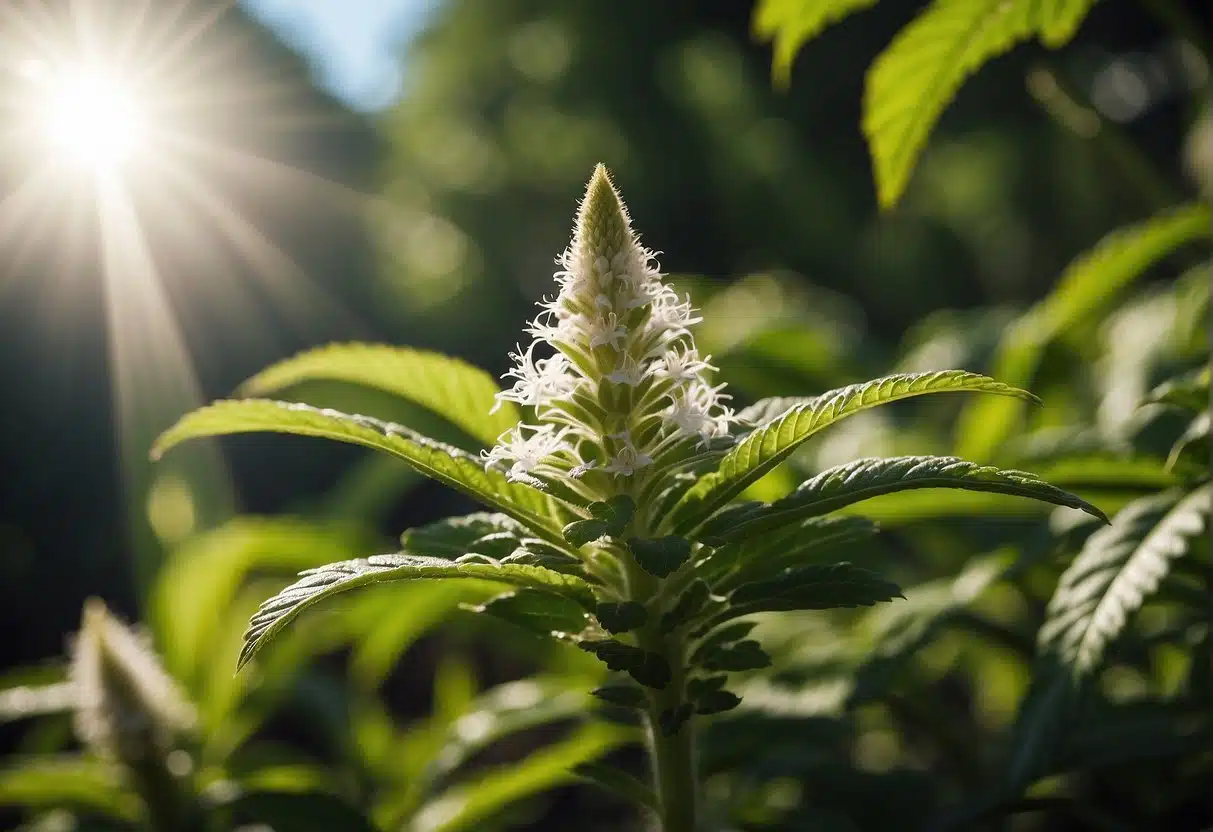
THCa flower, or THC acid flower, is a raw form of cannabis that has not yet been decarboxylated to convert THCa into THC. Understanding the correct methods for consumption and storage are crucial to maintain the integrity and efficacy of THCa products.
Consumption Methods
Smoking: When you smoke THCa flowers, the heat causes decarboxylation, converting THCa into THC, the psychoactive component. This can be done using conventional methods like pipes or rolling papers.
Vaping: For a less harsh experience, you may prefer vaping. This method also decarboxylates THCa during the heating process, offering a differentiated experience in terms of flavor and aroma.
Edibles: If you choose to infuse THCa flowers into edibles, it’s essential to decarboxylate the flowers first by baking them at a controlled temperature. This activates the THC, which then allows for its psychoactive effects to be experienced upon consumption.
Raw Form: Utilizing THCa in its raw form, such as in juices or smoothies, allows you to consume the compound without the psychoactive effects, as THCa does not convert to THC without heat.
Storage and Quality Control
Storage:
- Keep your THCa flowers in an airtight container to protect them from air and moisture, which can degrade quality.
- Store the flowers in a cool, dark place to prevent decarboxylation and the degradation of cannabinoids.
Quality Control:
- Regularly inspect your stored THCa flowers for mold or unpleasant odors to ensure they remain safe for consumption.
- Refer to robust quality control measures as seen in studies like Quality control of traditional cannabis tinctures to ensure your THCa remains potent and free of contaminants.
By following these guidelines, you can enjoy the unique benefits of THCa flowers while preserving their quality. Whether you prefer the traditional methods of smoking and incorporating into edibles or using the flowers in their raw state, proper storage is as essential as the method of consumption.
End of Growth
As your cannabis plants reach the end of their growth cycle, key processes of harvesting and curing become critical for ensuring the quality of your THCa flower. Your attention to detail during this phase is paramount in cannabis cultivation, whether as a hobby or for commercial purposes.
Post-Harvest Practices
Once you have determined that your cannabis plants are ready for harvest—typically when trichomes are clear to milky—it’s time to carefully cut and trim the plants. The process of curing begins after trimming, which entails a careful drying method to prevent mold and preserve terpene profiles. Your flowers should be dried in a controlled environment with the following conditions:
- Temperature: 60-70°F (15.6-21.1°C)
- Humidity: 45-55%
Properly drying your cannabis can take 7-14 days, after which curing takes place. Curing is done by placing the dried flowers in airtight containers, opening them periodically to allow for air exchange and to remove any moisture. This stage is crucial for the development of flavor, aroma, and potency of the cannabinoids, including THCa.
Reflection and Learning
After the harvest, take the time to reflect on your cannabis cultivation experience. Assess the quality of your flower, including its potency, aroma, and flavor. Evaluate each step—from seed selection to harvesting—and note any improvements for future grows. This practice not only helps you maintain quality control but also furthers your expertise as a grower. Your meticulous observations will be invaluable for honing your craft and achieving consistently high-quality THCa flower yields in all your subsequent cannabis cultivation endeavors.
Exploring Market and Industry Trends
As you navigate the shifting landscapes of cannabis cultivation and hemp production, understanding the market and industry trends is essential. These trends not only influence growing practices but also shape legal standards and consumer expectations.
Evolution of Cannabis Cultivation
Cannabis cultivation has undergone significant transformation over the years, shifting from underground operations to sophisticated, legally-compliant facilities. Growers have moved toward selective breeding techniques to produce plants with specific cannabinoid profiles. This evolution is driven by the market’s demand for different psychoactive and therapeutic effects, with cannabinoid content playing a pivotal role. As a result, cultivation practices have adapted to increase the yields of THC, the psychoactive compound in cannabis, and in particular, THCa, which is THC in its acid form.
The Rise of Hemp and Cannabinoid Varieties
With the legalization of hemp, defined as cannabis plants containing less than 0.3% THC, there has been a surge in hemp-derived products. This has led to a diversification in cannabinoid varieties available in the market. Hemp plants are now selectively bred not only for their fiber and seed but also for their cannabinoid content, particularly CBD and CBDA. Breeders and cultivators are fine-tuning their methodologies to optimize cannabinoid yields to meet market demands, which increasingly include high-CBD industrial hemp accessions. The industry trend leans heavily toward maximizing the medicinal and therapeutic potential of hemp plants, positioning cannabinoid-rich varieties as staple products within the wellness sector.
Frequently Asked Questions
In this section, you will find targeted advice and considerations for cultivating high-THCa cannabis flowers, from seed selection to legal compliance.
What are the best practices for cultivating high-THCa flowers from seeds?
To optimize THCa production from seeds, it’s crucial to start with high-quality, genetically predisposed strains. Ensure a stable growing environment with adequate light, temperature control, and a precise feeding schedule to support the plant’s growth phases.
Can you provide tips for growing high-THCa flowers indoors?
Growing high-THCa flowers indoors requires controlled lighting, usually with a schedule of 18 hours of light and 6 hours of darkness during the vegetative stage, switching to 12 hours on and off during flowering. Proper ventilation and consistent monitoring of humidity levels are equally important to prevent mold and mildew.
What are the legal considerations for cultivating THCa flowers?
Legality varies by location. In areas where cannabis cultivation is legal, it’s your responsibility to adhere to the specific regulations, which may include limits on plant count, required reporting, and tax compliance. Always verify current laws in your jurisdiction before starting your grow.
How can you ensure the safety and quality of home-grown THCa flowers?
To maintain safety and quality, use non-toxic pest control methods and avoid pesticides. Regularly test your soil and water quality, and ensure that harvested flowers are properly dried and cured to prevent mold and preserve cannabinoid content.
What are the differences between Indica and Sativa strains in the context of THCa potency?
Indica and Sativa strains often vary in their cannabinoid profiles. While both can possess high levels of THCa, Indicas are typically associated with higher CBD content, and Sativas are known for their THCa and terpene richness. This can influence potency and the overall experience.
Does consumption of THCa flowers lead to psychoactive effects?
THCa itself does not produce psychoactive effects; however, when it’s exposed to heat through combustion or decarboxylation, it converts into THC, which is psychoactive. Raw THCa flowers would not produce these effects unless activated by heat.

